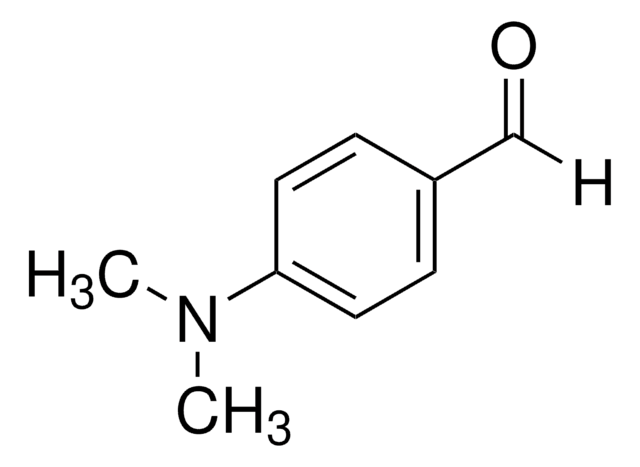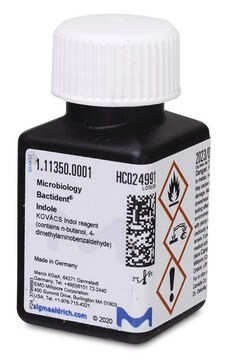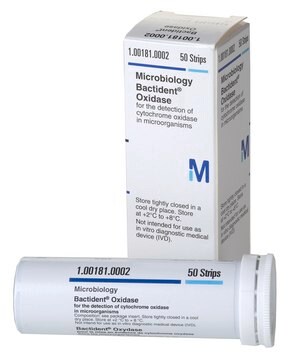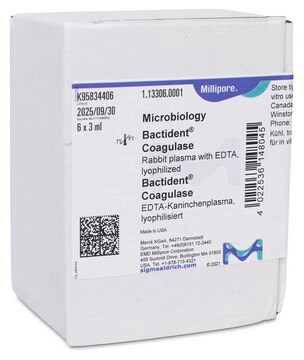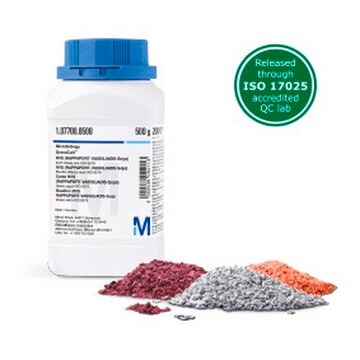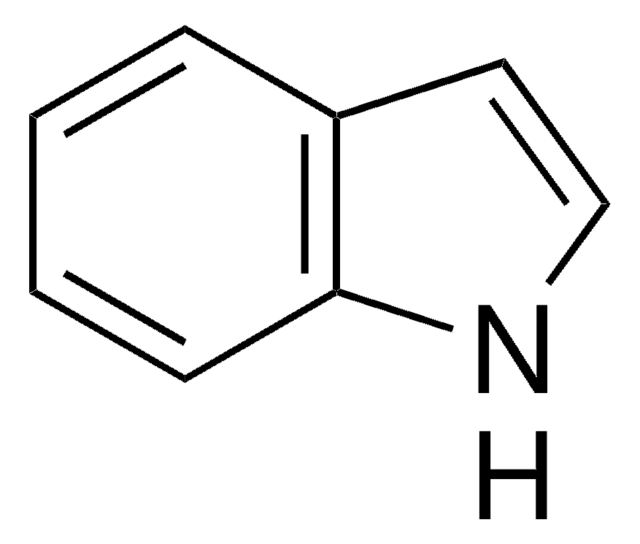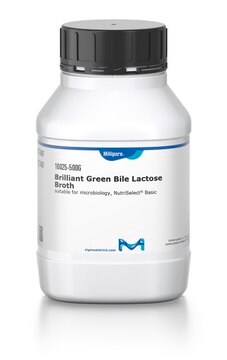1.09293
KOVACS′ indole reagent
for detecting microbial indole in the identification of indole-positive and indole-negative microorganisms, suitable for microbiology
Sinónimos:
4-(Dimethylamino)benzaldehyde solution, Indole reagent, Kovac′s reagent, Kovac′s reagent for indoles
About This Item
Productos recomendados
Nivel de calidad
formulario
liquid
envase
pkg of 100 mL
técnicas
microbe id | specific enzyme detection: suitable
color
yellow
pH
<1 (20 °C in H2O)
temperatura de transición
flash point 36 °C
densidad
0.92 g/cm3 at 20 °C
aplicaciones
microbiology
temp. de almacenamiento
2-8°C
idoneidad
Escherichia coli
enterovirulent E. coli (EEC) spp.
Categorías relacionadas
Descripción general
Aplicación
Almacenamiento y estabilidad
Nota de análisis
Indole formation (Proteus vulgaris ATCC 8427): +
Indole formation (Enterobacter aerogenes ATCC 13048): -
Tested in DEV-Tryptophan broth art. no. 1.10694. (after incubation 24 hrs.; 35 °C aerobic).
Otras notas
Palabra de señalización
Danger
Frases de peligro
Consejos de prudencia
Clasificaciones de peligro
Acute Tox. 4 Oral - Eye Dam. 1 - Flam. Liq. 3 - Met. Corr. 1 - Skin Corr. 1 - Skin Sens. 1
Código de clase de almacenamiento
3 - Flammable liquids
Clase de riesgo para el agua (WGK)
WGK 1
Punto de inflamabilidad (°F)
96.8 °F
Punto de inflamabilidad (°C)
36 °C
Listados normativos
Los listados normativos se proporcionan para los productos químicos principalmente. Para los productos no químicos sólo se puede proporcionar información limitada. Si no hay ninguna entrada, significa que ninguno de los componentes está en la lista. Es obligación del usuario garantizar el uso seguro y legal del producto.
EU REACH Annex XVII (Restriction List)
Certificados de análisis (COA)
Busque Certificados de análisis (COA) introduciendo el número de lote del producto. Los números de lote se encuentran en la etiqueta del producto después de las palabras «Lot» o «Batch»
¿Ya tiene este producto?
Encuentre la documentación para los productos que ha comprado recientemente en la Biblioteca de documentos.
Los clientes también vieron
Protocolos
Specifies a horizontal method for the detection of Salmonella spp. in the food production chain.
Nuestro equipo de científicos tiene experiencia en todas las áreas de investigación: Ciencias de la vida, Ciencia de los materiales, Síntesis química, Cromatografía, Analítica y muchas otras.
Póngase en contacto con el Servicio técnico